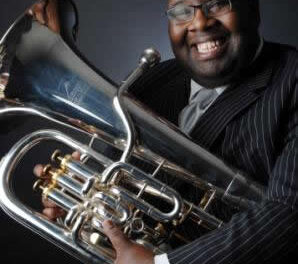What stretches all the way from the 1590’s to the 1990’s? That’s the exact spread of time used by harpsichordist Elaine Funaro in attempting to answer her own question, “Does Time have a Sound?” With her stylish music skills and dramatic flair, she entertained and educated the capacity audience in the grand old Smedes Parlor at Saint Mary’s School. That time spectrum also defined the approximate life span of the harpsichord itself.
In a clever “Nod to the 90’s” the soloist chose pieces from the final decade of the five included centuries, beginning with selections from William Byrd’s My Lady Nevells Book (1591). Here and in all following pieces she complemented the music with proper period costumes and running dramatic commentary. The seventeenth century came on with Purcell’s Lesson No. 5 in C (1692). These dances brought a more full and “modern” sound than the older works had evinced (the Byrd pieces having been played on the small Italian virginal).
An apex of sorts arrived from the eighteenth century: March des Marseillois (1792). Here was a set of variations on the great French national anthem, “La Marseillaise,” by the then-prominent French composer, Claude Balbastre. Could that be a harpsichord making those brawny sounds? Accompanying the piece with a fanciful account of a near execution during the Revolution, this accomplished player removed the instrument from the stuffy confines of musty drawing rooms and powdered wigs. Also contributing to the revolutionary spirit was a movement from Sonata Opus 1 (1795) by Hélène Montgeroult, rumored to have escaped the guillotine only because of her musicianship. So martial was the rendition of “La Marseillaise” that the audience was on the verge of rising as one and shouting “Allons, enfants de la patrie!”
Who knew that anything had been written for the harpsichord after 1850? Just kidding. Rigodon (1892) by François Thomé represented a large step from a hundred years earlier. The soloist reported that it had been called a vehicle to “show off the legendary trill” of the instrument.
You’d never believe the twentieth century personality that the harpsichord can assume when imposing skills are applied. Suite Española (1999) by Timothy Brown and selections from Timothy Tikker’s Three Bulgarian Dances (1999) provided a spicy conclusion, replete with Latin beats and foot-stomping rhythms.
Many thanks to Elaine Funaro, exceptional artist and theatrical luminary, as well as to Saint Mary’s School, for an uncommonly uplifting evening. Time does indeed have a sound, a fact generously demonstrated by this edifying trek through five hundred years.
Note: This program is being toured to Chapel Hill, Durham, Greenville, & New Bern on 10/1-2 & 10/15-16 – for details, see our calendar.












